FRTR Fall 2023 General Meeting: Recent Advances in PFAS Characterization Technologies
Sponsored by: Federal Remediation Technologies Roundtable
The science and technology of site characterization for per-and polyfluoroalkyl substances (PFAS) has advanced in the five years since FRTR last addressed the topic in 2018. Federal agency budgets for PFAS remediation have grown substantially during this time. As a result, site characterization efforts such as Remedial Investigations, as well as early response actions, are underway at many Federal facilities. Funding for field-scale projects to further advance PFAS characterization technology and methodologies also has increased substantially.
The FRTR 2023 Fall General Meeting provides an opportunity for member agencies to share results of recent and on-going PFAS projects that are improving our understanding of PFAS characterization technologies. Specifically, invited presentations and roundtable discussions will explore current best practices for PFAS site characterization, emerging technologies and methods, case studies and current agency needs for technology transfer and future research.
 Geoffrey S. Plumlee, Ph.D., Chief Scientist of the USGS (gplumlee@usgs.gov)
Geoffrey S. Plumlee, Ph.D., Chief Scientist of the USGS (gplumlee@usgs.gov)
Dr. Geoff Plumlee has served in his current position (first as Senior Science Advisor to the USGS Director and now Chief Scientist of the USGS) since February 2019. In this position, Geoff provides strategic scientific vision and counsel to the Director and other executive leaders of the USGS on inter- and transdisciplinary USGS science research priorities, activities, capabilities, and partnerships. From May 2016 to early 2020, Geoff was the USGS Associate Director for Environmental Health, where he led USGS research at the intersection of the environment and health.
Geoff brought to these executive leadership positions over 30 years of research and science leadership experience with the USGS, as well as his ability to seek out and establish successful research collaborations with scientists from a broad range of earth, health, social, emergency response, and engineering science disciplines. From 1983 through May 2016 he helped lead and carry out many research projects on linkages between mineral resources, the environment, disasters, and human health.
Geoff is a Fellow of the Geological Society of America (GSA) and past Chair of the GSA Geology and Health Division. He is a member and past Council Member of the American Geophysical Union (AGU), where he proposed the idea for and worked to help establish the new AGU GeoHealth Section. Geoff has been an adjunct clinical assistant professor at the University of Colorado School of Public Health since 2009, where he helped design and for 10 years lectured in a transdisciplinary course on environmental exposures and health.
Geoff is author or co-author of more than 140 scientific papers, including many in technical journals and books across a wide range of scientific disciplines such as environmental geochemistry, public health, natural hazards, economic geology, and geology. Geoff has received the Department of the Interior Superior and Meritorious Service awards, the GSA Geology and Health Division Distinguished Service Award, and the Society of Economic Geologists Waldemar Lindgren (Early Career Scientist) Award.
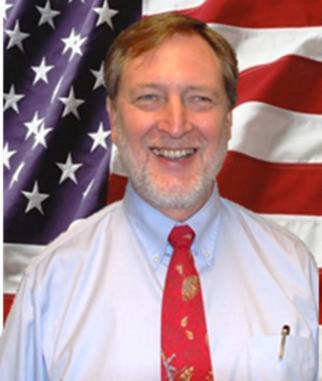 Kent Glover, Ph.D., U.S. Air Force Civil Engineer Center (AFCEC) (kent.glover@us.af.mil)
Kent Glover, Ph.D., U.S. Air Force Civil Engineer Center (AFCEC) (kent.glover@us.af.mil)
Dr. Glover has been involved in groundwater and vadose zone remediation since the early 1980s. Currently, he is the Air Force Subject Matter Expert (SME) for Remediation Systems and provides technical leadership in remedy selection, implementation, performance evaluation and optimization. He also provides expertise in numerical modeling of contaminant fate and transport, and remediation of non-aqueous phase liquids. Before coming to the Air Force in 2010, he was a Principal Scientist for several engineering firms providing consulting services to private sector and governmental clients. From 1976 until 1989, he served in the U.S. Geological Survey as a hydrologist for groundwater contamination and water resources projects across the western United States. He holds a Ph.D. and M.S. in Environmental Science and Engineering from Colorado School of Mines and a B.S. in Watershed Science from Colorado State University.
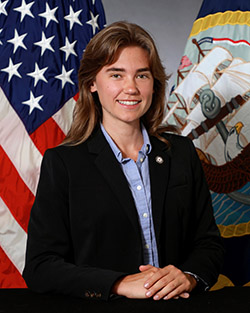 Nicolette Andrzejczyk, Navy (nicolette.e.andrzejczyk.civ@us.navy.mil)
Nicolette Andrzejczyk, Navy (nicolette.e.andrzejczyk.civ@us.navy.mil)
Dr. Nicolete Andrzejczyk is an environmental toxicologist at NAVFAC EXWC, with research experience spanning several environmental contaminant groups, including crude oils, novel disinfection byproducts, estrogenic compounds, pesticides, and PFAS. Dr. Andrzejczyk is involved in various PFAS-related projects for the Navy and provides technical consultation on reduction of human health and ecological risk at Navy environmental restoration sites. Prior to joining NAVFAC EXWC, she completed her Ph.D. at the University of California, Riverside studying molecular effects of various contaminant groups on aquatic biota through whole transcriptome sequencing and other techniques.
 Sarah (Bekah) Burket, U.S. EPA (burket.sarah@epa.gov)
Sarah (Bekah) Burket, U.S. EPA (burket.sarah@epa.gov)
S. Bekah Burket recently joined the methods team in the Engineering and Analysis Division of the Office of Science and Technology within the EPA Office of Water. Prior to working with EPA, Bekah researched bioaccumulation of contaminants of emerging concern as part of her PhD work at Baylor University. As the newest chemist with the methods team, she is working on developing PFAS methods for wastewaters and is currently leading the development effort for an adsorbable organic fluorine method.
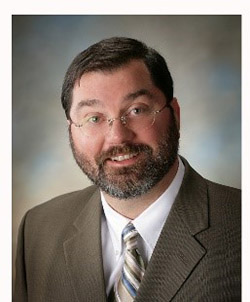 Joseph Quinnan, P.E., P.G., Arcadis (joseph.quinnan@arcadis.com)
Joseph Quinnan, P.E., P.G., Arcadis (joseph.quinnan@arcadis.com)
Joe Quinnan is a Senior Vice President with more than 32 years professional experience in environmental consulting. He is co-author of
the book Remediation Hydraulics (CRC Press, 2008) and is the technical lead for Arcadis’ PFAS programs for the DoD and North American Director
of Emerging Contaminants. He’s engaged in SERDP, ESTP and AFCEC BAA projects involving AFFF source behavior and PFAS treatment.
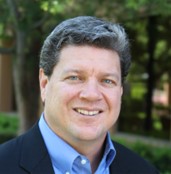 Craig Divine, Arcadis (craig.divine@arcadis.com)
Craig Divine, Arcadis (craig.divine@arcadis.com)
Dr. Craig Divine is a Technical Expert and Senior Vice President at Arcadis with 25 years of experience characterizing and remediating PFAS,
chlorinated solvents, metals, and petroleum hydrocarbons. He has served as a principal investigator on numerous SERDP and ESTCP projects, including projects that have developed and demonstrated the Sentinel™ passive sampler and HRX Well® technologies for PFAS monitoring and treatment. He earned a bachelor's degree in biology from Wheaton College, a master's degree in watershed science from Colorado State University, and a doctoral degree in hydrogeology from the Colorado School of Mines.
 Richard Wilkin, U.S. EPA (wilkin.rick@epa.gov)
Richard Wilkin, U.S. EPA (wilkin.rick@epa.gov)
Dr. Rick Wilkin is Chief of the Subsurface Remediation Branch in the Center for Environmental Solutions and Emergency Response. He is an environmental geochemist with expertise in groundwater systems, contaminant transport & fate, and remediation of impacted groundwater. He received a Ph.D. in Geosciences from the Pennsylvania State University in 1995 and has been with EPA since 1999. He serves on the editorial boards of Chemical Geology, Geochemical Transactions, and Frontiers in Geochemistry.
Matthew Rovero, U.S. EPA (rovero.matthew@epa.gov)
Matt Rovero is a chemist with EPA’s Office of Research and Development, Groundwater Characterization and Remediation Division. His work focuses on understanding PFAS migration through the subsurface, technical support for stable isotope ratio analysis and As, Cr, and V speciation. He previously worked as an analytical chemist with CH2M Hill and Gallatin Steel.
 Andrea Tokranov, Ph.D., U.S. Geological Survey (atokranov@usgs.gov)
Andrea Tokranov, Ph.D., U.S. Geological Survey (atokranov@usgs.gov)
Andrea Tokranov, Ph.D., is a research hydrologist at the U.S. Geological Survey (USGS), where her research focuses on environmental exposure, fate, and transport of PFAS. She also manages a USGS PFAS research laboratory where high resolution mass spectrometry is used to analyze environmental samples using both targeted and non-targeted analysis. Andrea earned her Bachelor of Science degree from Brown University in 2012 and her Ph.D. from the Harvard University School of Engineering and Applied Sciences in 2019.
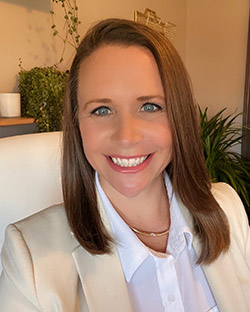 Rebecca Higgins, Minnesota Pollution Control Agency (rebecca.higgins@state.mn.us)
Rebecca Higgins, Minnesota Pollution Control Agency (rebecca.higgins@state.mn.us)
Rebecca Higgins, P.G. is a Senior Hydrogeologist at the Minnesota Pollution Control Agency and currently serves as a Co-Chair of the Interstate
Technology and Regulatory Council and President-Elect of the Minnesota Ground Water Association. In her current role as a state regulator, she provides technical oversight of PFAS investigations in the East Metro under the 2018 3M Setlement and other 3M Superfund sites. She is a licensed Professional Geologist and has a Bachelor of Science in Geology from North Dakota State University.
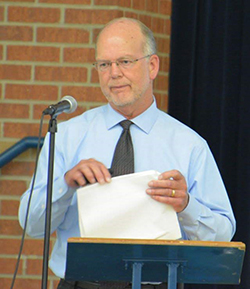 Paul Carroll, AFCEC (paul.carroll.1@us.af.mil)
Paul Carroll, AFCEC (paul.carroll.1@us.af.mil)
Paul Carroll is the Installation Program Manager/BRAC Environmental Coordinator for the BRAC Program Management Division at USGS. He manages all aspects of Base Realignment and Closure activities for five former Air Force installations, focusing on environmental cleanup, property transfer, community coordination, and public interaction. He holds a B.S. in Geology/Geophysics from Texas Tech University, which prepared him for the other various roles in environmental cleanup he's assumed, including Remedial Program Manager, Environmental Engineer, Site Manager, and Program Manager.
 Heather F. Henry, Ph.D., Program Administrator, NIEHS Superfund Research Program (heather.henry@nih.gov)
Heather F. Henry, Ph.D., Program Administrator, NIEHS Superfund Research Program (heather.henry@nih.gov)
Heather Henry, Ph.D., is a health science administrator for the NIEHS where she oversees Superfund Research Program (SRP) grants that spans human health toxicology, risk assessment, detection technologies and remediation approaches. She provides guidance to potential applicants for SRP’s Multiproject Center Grants (P42s), Individual Research Grants (R01s), Small
Business / Technology Transfer Grants (R41-44; SBIR/STTR), and Conference Grants (R13). Heather studied plant-based environmental remediation
(phytoremediation) and ecological restoration as part of her doctoral work at the University of Cincinnati and as a Fulbright Postdoctoral Fellow at the University of Melbourne and University of Adelaide in Australia. She has been with NIEHS since 2006.
 Allison Narizzano, SERDP/ESTCP (allison.m.narizzano.civ@health.mil)
Allison Narizzano, SERDP/ESTCP (allison.m.narizzano.civ@health.mil)
Allison Narizzano is a Toxicologist at the Defense Centers for Public Health - Aberdeen and is assigned to SERDP-ESTCP, where she facilitates PFAS-related ecotoxicology projects. She received her B.S. in Biology from Penn State University and holds a Ph.D. in Toxicology from the University of Maryland, Baltimore. Allison’s work in defense-relevant chemical management relies on valued partnerships across agencies, industry, and academia and leans into the concept of One Health.
Moderator:
 Jean Balent, U.S. EPA Technology Innovation and Field Services Division (balent.jean@epa.gov or 202-566-0832)
Jean Balent, U.S. EPA Technology Innovation and Field Services Division (balent.jean@epa.gov or 202-566-0832)
Ms Balent is on the staff of the EPA's Technology Innovation and Field Services Division where she has worked to collect and disseminate hazardous waste remediation and characterization information since 2003. Ms Balent manages the Clean Up Information Network website and actively supports online communication and collaboration resources available to EPA. She formerly worked with the US Army Corps of Engineers Environmental Engineering Division in the Buffalo District. Ms Balent was also a member of the SUNY-Buffalo Groundwater Research Group where she constructed and tested large scale models of groundwater flow. Ms Balent has also conducted research relating to the Great Lakes, environmental remediation, and brownfields re-development. She holds a Bachelor's degree in environmental engineering from SUNY-Buffalo and a Master's degree in Information Technology from AIU.
-
 Slide Presentation for Andrzejczyk (3.22MB/PDF)
Slide Presentation for Andrzejczyk (3.22MB/PDF)
-
 Slide Presentation for Burket (1.24MB/PDF)
Slide Presentation for Burket (1.24MB/PDF)
-
 Slide Presentation for Quinnan (4.87MB/PDF)
Slide Presentation for Quinnan (4.87MB/PDF)
-
 Slide Presentation for Divine (3.34MB/PDF)
Slide Presentation for Divine (3.34MB/PDF)
-
 Slide Presentation for Wilkin and Rovero (2.12MB/PDF)
Slide Presentation for Wilkin and Rovero (2.12MB/PDF)
-
 Slide Presentation for Tokranov (7.12MB/PDF)
Slide Presentation for Tokranov (7.12MB/PDF)
-
 Slide Presentation for Higgins (7.40MB/PDF)
Slide Presentation for Higgins (7.40MB/PDF)
-
 Slide Presentation for Carroll (20.8MB/PDF)
Slide Presentation for Carroll (20.8MB/PDF)
-
 Combined Agency Announcements (593KB/PDF)
Combined Agency Announcements (593KB/PDF)
Webinar Slides and References:
-
 Slide Presentation for Andrzejczyk (3.22MB/PDF)
Slide Presentation for Andrzejczyk (3.22MB/PDF)
-
 Slide Presentation for Burket (1.24MB/PDF)
Slide Presentation for Burket (1.24MB/PDF)
-
 Slide Presentation for Quinnan (4.87MB/PDF)
Slide Presentation for Quinnan (4.87MB/PDF)
-
 Slide Presentation for Divine (3.34MB/PDF)
Slide Presentation for Divine (3.34MB/PDF)
-
 Slide Presentation for Wilkin and Rovero (2.12MB/PDF)
Slide Presentation for Wilkin and Rovero (2.12MB/PDF)
-
 Slide Presentation for Tokranov (7.12MB/PDF)
Slide Presentation for Tokranov (7.12MB/PDF)
-
 Slide Presentation for Higgins (7.40MB/PDF)
Slide Presentation for Higgins (7.40MB/PDF)
-
 Slide Presentation for Carroll (20.8MB/PDF)
Slide Presentation for Carroll (20.8MB/PDF)
-
 Combined Agency Announcements (593KB/PDF)
Combined Agency Announcements (593KB/PDF)
Additional Resources:
Thank you for participating in our webinar. We would like to receive any feedback you might have that would make this service more valuable.
Help & FAQs
- Frequently Asked Questions
- Content Questions?
Call Cindy Frickle at 202-566-0927 or frickle.cynthia@epa.gov - Technical Problems?
Leave us a comment - Cancel Your Registration
- My Participation Records
- CEU Credits and PDHs
Zoom Resources
This seminar will be delivered through Zoom. Participants are encouraged to update to the latest version of the Zoom application for the best experience. If you are unable to install the Zoom application, most functions will be available if you join just using a modern web browser such as Chrome, Edge or Firefox. We strongly encourage you to run the Zoom Meeting Test prior to attending this seminar. Technical support on the day of the seminar will be very limited and subject to significant delays.
Rehabilitation Act Notice for Reasonable Accommodation
It is EPA's policy to make reasonable accommodation to persons with disabilities wishing to participate in the agency's programs and activities, pursuant to the Rehabilitation Act of 1973, 29 U.S.C. 791. Any request for accommodation should be made to at or , preferably one week or more in advance of the seminar, so that EPA will have sufficient time to process the request. EPA would welcome specific recommendations from requestors specifying the nature or type of accommodation needed. EPA welcomes specific recommendations from requestors specifying the nature or type of accommodation needed. Please note that CLU-IN provides both alternate phone call-in options and closed captioning for all webinars, and requests for these specific accommodations are not necessary.
Rehabilitation Act Notice for Reasonable Accommodation
It is EPA's policy to make reasonable accommodation to persons with disabilities wishing to participate in the agency's programs and activities, pursuant to the Rehabilitation Act of 1973, 29 U.S.C. 791. Any request for accommodation should be made to at or , preferably one week or more in advance of the webinar, so that EPA will have sufficient time to process the request. EPA would welcome specific recommendations from requestors specifying the nature or type of accommodation needed. EPA welcomes specific recommendations from requestors specifying the nature or type of accommodation needed. Please note that CLU-IN provides both alternate phone call-in options and closed captioning for all webinars, and requests for these specific accommodations are not necessary.
Webinar Recording
By participating in this CLU-IN webinar, you automatically agree to authorize recording of audio and visual content presented during this live event and consent to subsequent use of this recording in the public domain by the U.S. Environmental Protection Agency. This recording may include questions, comments and poll responses provided by you during the live event in addition to your name, voice, image or likeness. This recording will be made available after the conclusion of the live event as part of the CLU-IN webinar archives, and will remain available indefinitely. If you do not wish to consent to the recording, please do not join the live event, and contact Jean Balent at 202-566-0832 or balent.jean@epa.gov to discuss your concerns.
Content Disclaimer
This webinar is intended solely to provide information to the public. The views and opinions expressed as part of this webinar do not necessarily state or reflect those of the U.S. Environmental Protection Agency. It is not intended, nor can it be relied upon, to create any rights enforceable by any party in litigation with the United States, or to endorse the use of products or services provided by specific vendors. With respect to this webinar, neither the United States Government nor any of their employees, makes any warranty, express or implied, including the warranties of merchantability and fitness for a particular purpose, or assumes any legal liability or responsibility for the accuracy, completeness, or usefulness of any information, apparatus, product, or process disclosed, or represents that its use would not infringe privately owned rights.

